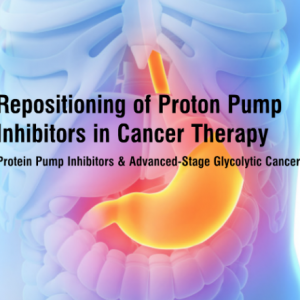
Repositioning of proton pump inhibitors in cancer therapy — download the full PPI from Cancer Chemother Pharmacol by Zhen-Ning Lui, Bing Tian, and Xiu-Li Guo.
Many of you may be aware that I have concentrated my cancer research on the glycolytic nature of many cancers. Cancers that are glycolytic, such as GBM and triple negative breast cancer, primarily rely on glycolysis for the generation of ATP, rather than mitochondrial ox-phos. The end product of glycolysis is pyruvate, which then will be converted into lactic acid. These glycolytic cancer cells must upregulate their mechanism(s) for effluxing lactic acid, or else they will succumb to necrosis or apoptosis, secondary to acidosis.
Any one or combination of 6 mechanisms may be upregulated, but commonly, the proton pump is one of the mechanisms upregulated.
A study was performed in 2012, in which adult females with metastatic breast cancer were randomly assigned to 3 arms: Arm A; Docetaxol 75 mg/m2 and cisplatin 75 mg/m2 on day 4, repeat q 21 days; Arm B; The same chemotherapy plus oral esomeprazole 80 mg bid on days 1-3, Arm C; The same as Arm B except esomeprazole 100 mg bid. Median progression free survival: Arm A (N = 33) 7.5 months; Arm B (N = 30) 10.9 months; Arm C (N= 31) 9.5 months. Among 17 patients with triple negative breast cancer this difference was bigger with median PFS of 9.5 and 3.3 months respectively.
The reason that the great difference was seen in the triple negative group, was that triple negative breast cancer is typically the most glycolytic of the breast cancers. Although the data indicates that long term use of proton pump inhibitors in the healthy population may lead to nutritional deficiencies, as well as altering the bacterial flora, the data suggests using PPIs may be a helpful adjunct in patients with advanced-stage glycolytic cancers.
healthyliving August 27th, 2019
Posted In: cancer care, Cancer Prevention
Tags: cancer, cancer care, glycolysis, glycolytic cancer, metastatic breast cancer, proton pump inhibitors
Leave a Comment

Myeloid derived suppressor cells (MDSC) play an important role in tumor progression. In cancer patients, the presence of MDSCs is associated with low survival rates and tumor recurrence.
MDSCs have a remarkable ability to suppress T-cell responses and to modulate the fate of multiple cells of the innate immune system. MDSCs utilize multiple mechanisms targeting the effector functions of cells involved in both the innate and adaptive immune responses to suppress anti-tumor immunity.
As stated in the article, retinoic acid stimulates MDSC to differentiate into immune-supporting cells. In addition, All-trans-retinoic acid (ATRA) is a potent differentiating agent, stimulating cancer stem cells to differentiate into less aggressive/resistant cells.
In the new study that has just started enrollment, All-trans retinoic acid (brand name – Vesanoid), is being used at a dose of 150 mg/m2 orally for 3 days surrounding each of the first four infusions of pembrolizumab. There are multiple studies that are ongoing, evaluating the combination of ATRA with chemotherapy and immunotherapy, ranging from doses of 20 mg/m2 up to 150 mg/m2.
ATRA is not specific to the treatment of melanoma; it may be used as an adjunct when treating any cancer.
healthyliving August 15th, 2019
Posted In: cancer care
Tags: all-trans-retinoic acid, ATRA, immune, immune response, MDSC, melanoma, myeloid derived suppressor cells, research, retinoic acid, stem cells, study, tumor, tumor progression
Leave a Comment
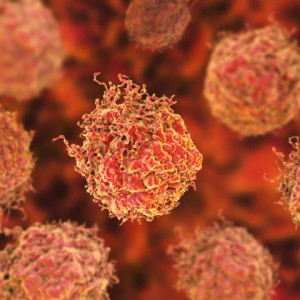
Prostate cancer ultrasound treatment as effective as surgery or radiotherapy – an article by Imperial College London.
This is a ground-breaking and game-changing study for males. For may years, the only curative treatment for males with prostate cancer that had not spread outside the prostate was surgery or radiation therapy.
What is particularly exciting about this study, is that many of these patients were “high-risk,” meaning they could have a PSA of at least 20, a Gleason Score of 8-10, and or presumed extraprostatic extension on digital rectal examination.
Now we have data indicating that a large percentage of patients diagnosed with prostate cancer can have treatment equal to the efficacy of surgery or radiation, with a significantly reduced incidence of urinary incontinence and/or erectile dysfunction. Keep in mind, however, that it has only recently been FDA-approved in the U.S., so success can be operator dependent.
healthyliving July 23rd, 2019
Posted In: cancer care
Tags: cancer, HIFU, high-intensity focused ultrasound, prostate cancer, radiotherapy, research, surgery, ultrasound
Leave a Comment
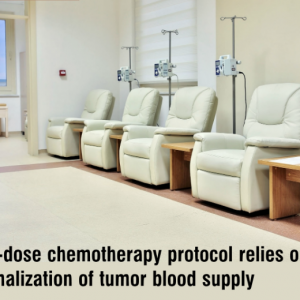
If you search metronomic chemotherapy at
clinicaltrials.gov, you will find at least 178 citations. While most oncologists will tell you that either low dose chemotherapy does not work, or that there has not been a randomized trial comparing standard of care to low dose metronomic, this concept is attracting plenty of attention from the academicians.
While cytotoxic chemotherapy works only through direct killing of cancer cells (and normal cells), low dose metronomic chemotherapy targets tumor vasculature, improves the host anti-cancer immune response, improves blood supply to the tumor (thereby increasing chemotherapy delivery to the tumor, as well as oxygen delivery, which then turns off HIF-1 alpha), and improves the tumor stroma to favor a host anti-tumor response.
Unfortunately, one size never fits all, so even low dose metronomic chemotherapy needs to be altered (dose and frequency) according to tumor response. The data continues to mount, and in the near-future, maximum tolerated dose chemotherapy, in the treatment of solid tumors, will no longer be the norm.
healthyliving July 8th, 2019
Posted In: cancer care
Tags: chemotherapy, low dose, low-dose chemotherapy, maximum tolerated dose, tumor, tumor treatment
Leave a Comment

Testosterone Research Brings New Hope for Cancer Patients – an article from Science Daily.
This is certainly not the first article published on the benefits of anabolic steroids for cancer cachexia. Anabolic steroids, such as testosterone and nandrolone, not only reduce muscle wasting, they also increase erythropoietin release, thereby mitigating the anemia and fatigue associated with maximum tolerated dose regimens. This affords the patients less transfusions, as well as a decreased need for erythropoietin stimulating agents, which have shown to increase mortality in cancer patients.
Commonly recommended drugs for appetite stimulation, such as progestins, corticosteroids, and dronabinol, are minimally and transiently effective. In addition, there is no risk of promoting the aggressiveness of the cancer with anabolic steroids if the cancer does not possess androgen receptors. To the contrary, breast cancer survivors who received subcutaneous implants containing testosterone in combination with a low dose of anastrozole for relief of menopausal symptoms, have had no recurrence of cancer after eight years of testosterone therapy.
Bottom line: consider the use of anabolic steroids for cancer cachexia, as long as the cancer does not possess androgen receptors, such as prostate cancer and often triple negative breast cancer.
healthyliving June 20th, 2019
Posted In: cancer care
Tags: anabolic steroids, cancer, cancer cachexia, cancer care, nandrolone, testosterone
Leave a Comment
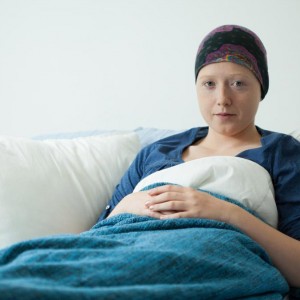
New Research Finds That Routine Breast Cancer Tests Lead to Unnecessary Mastectomies and Chemotherapy – an article from Cancer News.
This article may temper the celebrity-endorsed enthusiasm for prophylactic mastectomies for those with BRCA mutations. In addition, another study out of Duke Cancer Institute followed women with a BRCA mutation who had been diagnosed with ovarian cancer, with one group having prophylactic mastectomies, and the other group receiving routine screening (mammograms/MRIs); you can read the article here.
Results: For women diagnosed at any age with BRCA 1 and 2 gene mutations and within the first four years after ovarian cancer diagnosis, prophylactic mastectomy was associated with a negligible gain in survival. For women diagnosed at age 60 or older, regardless of time since ovarian cancer diagnosis, the gain in survival months was also negligible. For women diagnosed at age 40 to 50 with BRCA 1 and 2 mutations and at least five years after an ovarian cancer diagnosis, the procedure was associated with a survival benefit of two to five months.
Bottom line: Although prophylactic mastectomy in BRCA gene mutation carriers has shown to decrease breast cancer incidence, the data does not confirm an increase in survival.
healthyliving June 11th, 2019
Posted In: cancer care, Cancer Prevention
Tags: breast cancer, cancer, chemotherapy, mastectomy, new research, research, study
Leave a Comment
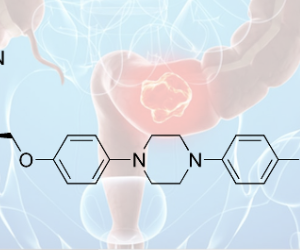
This is not the first article to document the potential efficacy of the antifungal agent, itraconazole. Multiple studies have shown that itraconazole inhibits cancer, not only through WNT inhibition, but also, through reversing MDR (multidrug resistance gene), inhibiting the Hedgehog pathway, and inhibiting angiogenesis. Human data have been published using itraconazole with prostate cancer, NSC lung cancer, triple neg breast cancer, ovarian cancer, as well as other cancers.
I refer physicians to the following article, “
Repurposing Drugs in Oncology (ReDO)—itraconazole as an anti-cancer agent.” There are many drugs that have other FDA-approved indications that can and should be repurposed for use in cancer. I have personally used itraconazole in a patient with stage III NSC lung cancer who refused chemotherapy; he remained without progression of disease for 1.5 years, until he died of a drug overdose.
healthyliving May 28th, 2019
Posted In: cancer care
Tags: antifungal, antifungal agent, breast cancer, cancer, colorectal cancer, III NSC lung cancer, itconazole, lung cancer, NSC lung cancer, ovarian cancer, prostate cancer
Leave a Comment
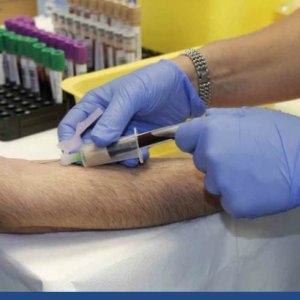
Most of the exciting current research in treating cancer revolves around immunotherapy. Although the PD-1, CTLA-4, and PD-L1 inhibitors have made a large impact in a subset of patients, the reality is that only approximately 20% of patients benefit from these checkpoint inhibitors.
Oncolytic viruses (OV) are interesting but, as a single agent, had not been successful because macrophages recognize infected cells and kill them together with their viruses. OV therapy, as a single agent, had not been successful because macrophages recognize infected cells and kill them together with their viruses.
Recent studies use new designs of OV that can stimulate cytotoxic T cells to kill cancer cells before the viral population is significantly depleted by the macrophages. Some of these studies introduce enhancement of the T cells by blocking their checkpoints. Mice experiments demonstrated that both CTLA-4 and PD-L1 checkpoints blockade enhance the OV treatment.
Although patients typically will enter a clinical trial to get a combination of oncolytic virus with checkpoint inhibitors, we have the ability to compassionately use these on patients, outside of a clinical trial.
Rigvir is a genetically unaltered oncolytic virus with approval in a few European countries. The efficacy data is extremely scarce and only for melanoma, but perhaps combined with checkpoint inhibition, its efficacy would improve. For those of you interested in treating patients with this combination, I will make myself available.
healthyliving May 14th, 2019
Posted In: cancer care, Cancer Prevention
Tags: cancer, cancer care, immunotherapy, oncolytic virus, OV, OV therapy, rigvir
Leave a Comment

Personalized cancer vaccine may increase long-term survival in patients with deadly brain cancer — an article from Science Daily.
Unfortunately, with all of our new cancer drugs, we have been unable to improve survival for patients with glioblastoma (GBM). Northwest Biotherapeutics, Inc uses a personalized vaccine, by taking the patients’ tumor, and making a lysate from it. The brain tumor tissue lysate is then combined with the patients’ own dendritic cells, so the dendritic cells can “learn” what it needs to attack. These matured cells are then injected back into the patient.
Using this technique, we are seeing improved survival for GBM, certainly compared to any other modalities. When we sit back and attempt to discern the “big picture” in treating cancer, we keep coming back to the same concept: each patient with cancer must be treated uniquely and individually, because each cancer is a unique disease to each individual. In the future, if a patient presents to you with GBM, consider sending them for a clinical trial with Northwest Biotherapeutics, Inc.
healthyliving April 23rd, 2019
Posted In: cancer care
Tags: brain cancer, cancer, GBM, personal vaccine, survival, vaccine
Leave a Comment

This is a groundbreaking article, as it safely increases the population who do not need to undergo chemotherapy, even by conventional guidelines. To reiterate what I have said in the past, conventional chemotherapy dosing probably adds the most benefit in the adjuvant setting, as opposed to metastatic disease, where it improves survival marginally.
Having said that, of course we do not want to use it in the adjuvant setting, if it does not improve progression-free or overall survival.
Bottom line: In the 50-75 year old age group, with ER+, Her-2 neg cancer and negative nodes, with an Oncotype Recurrence Score between 11 and 25, chemotherapy is NOT indicated. In women younger than 50, with Oncotype Recurrence Scores between 16 and 25, outcomes were only SLIGHTLY better in the chemotherapy group, so patients need to take that into consideration.
healthyliving April 9th, 2019
Posted In: cancer care
Tags: breast cancer, cancer, chemo, chemotherapy
Leave a Comment
Next Page »








